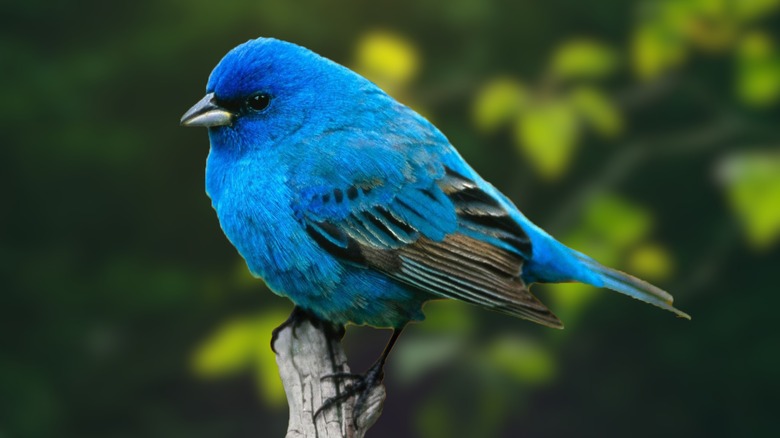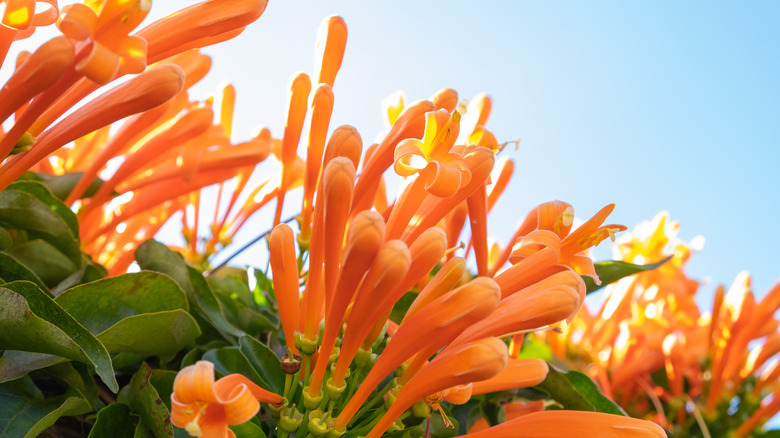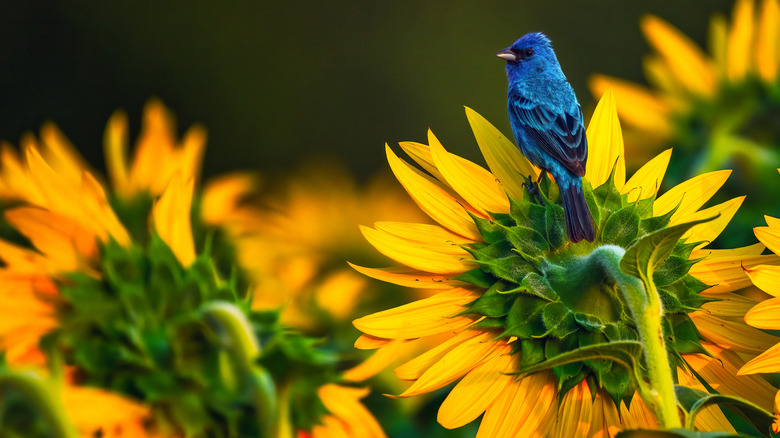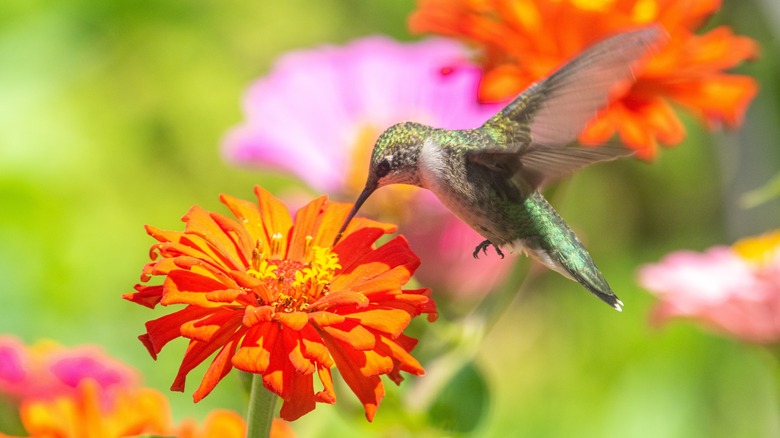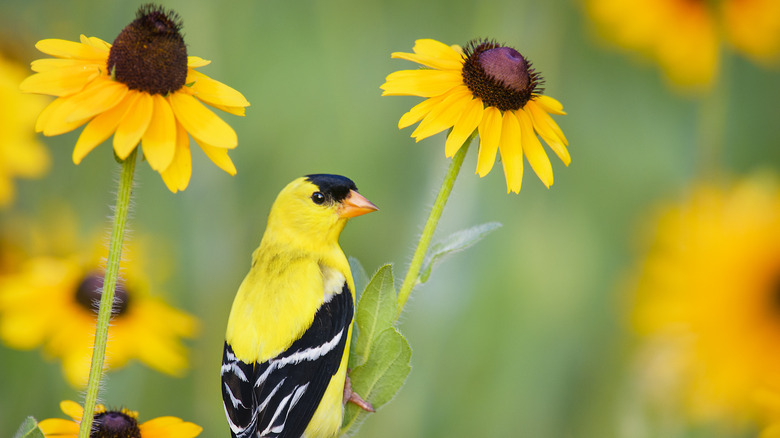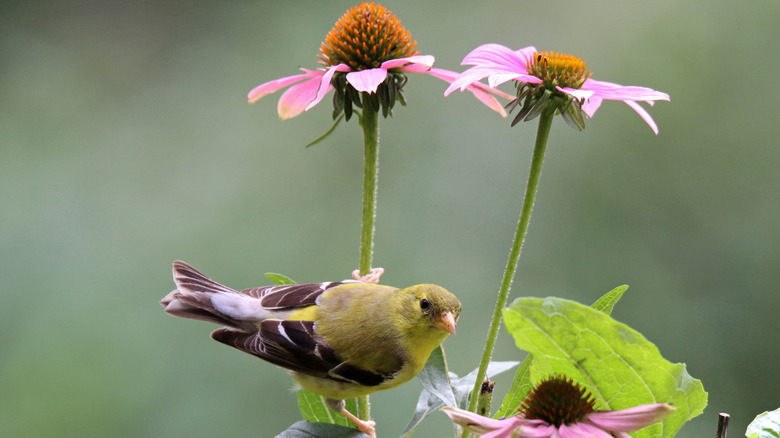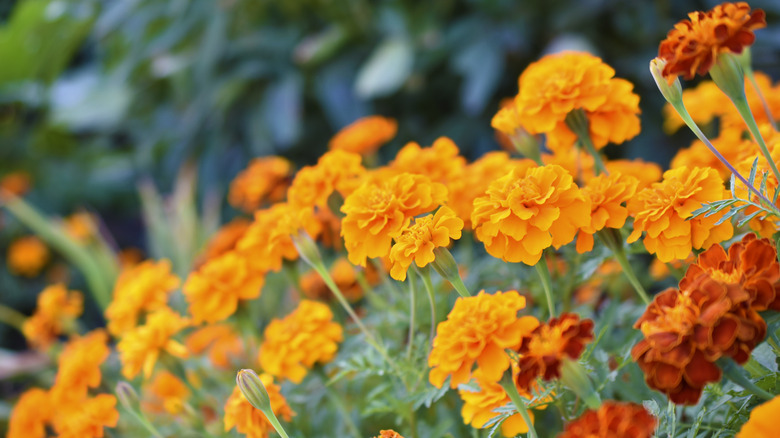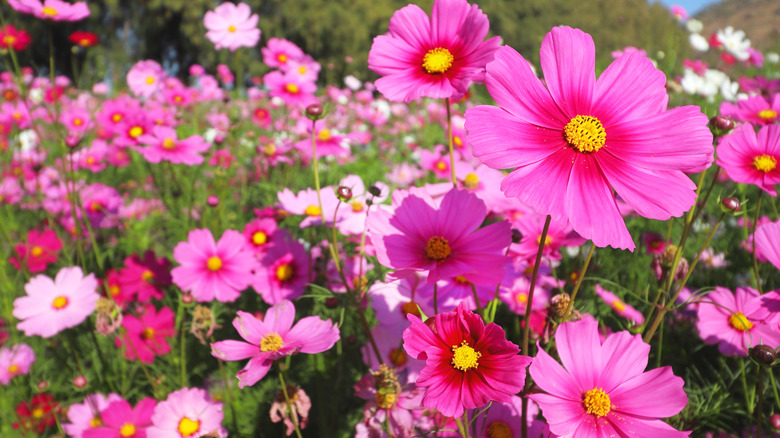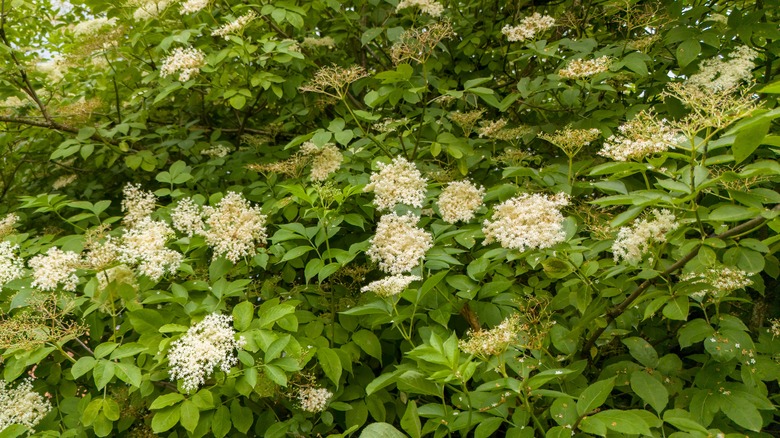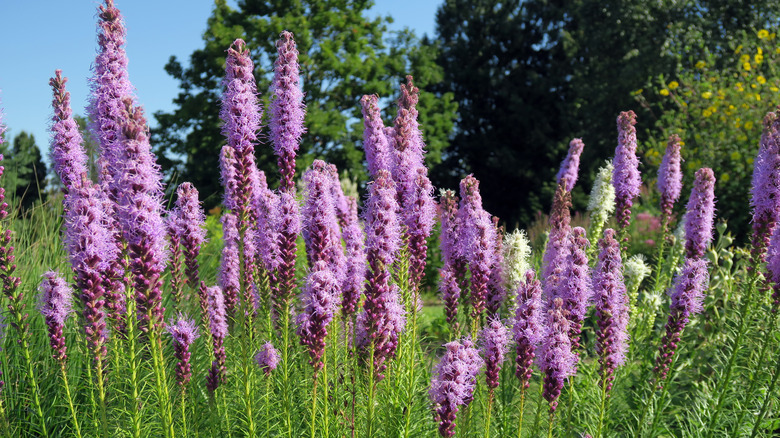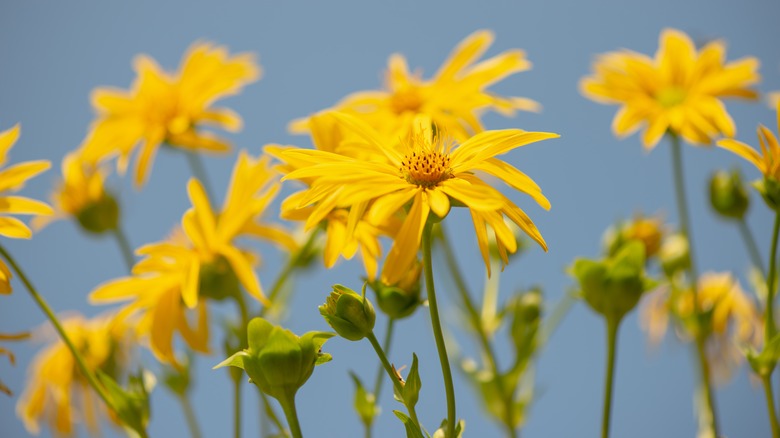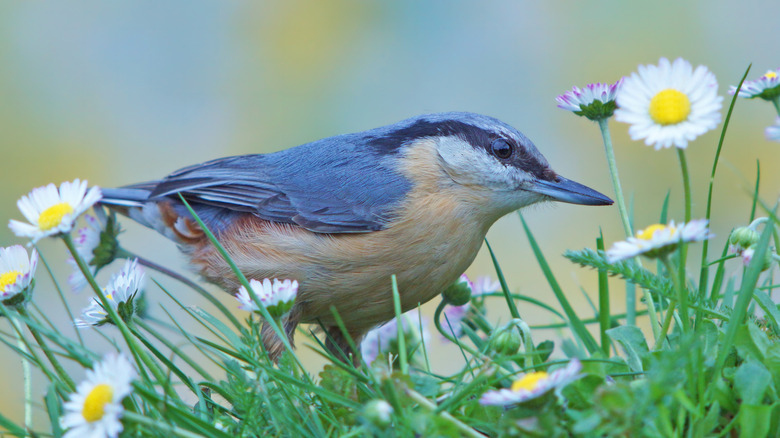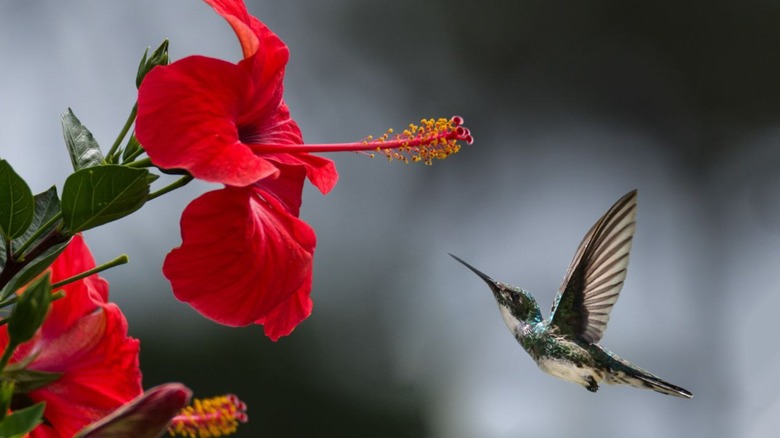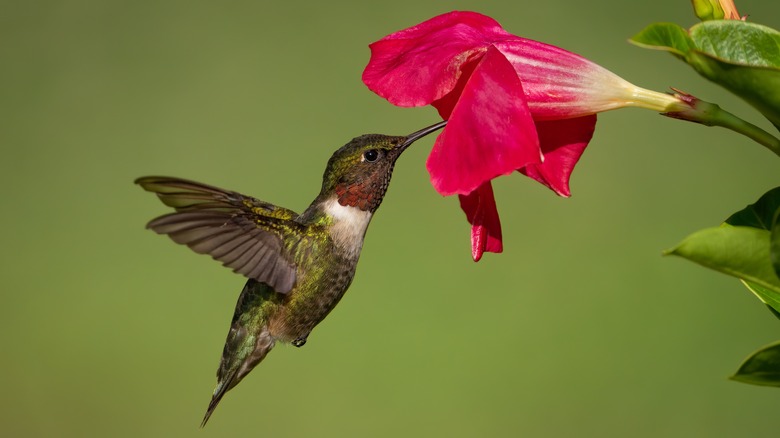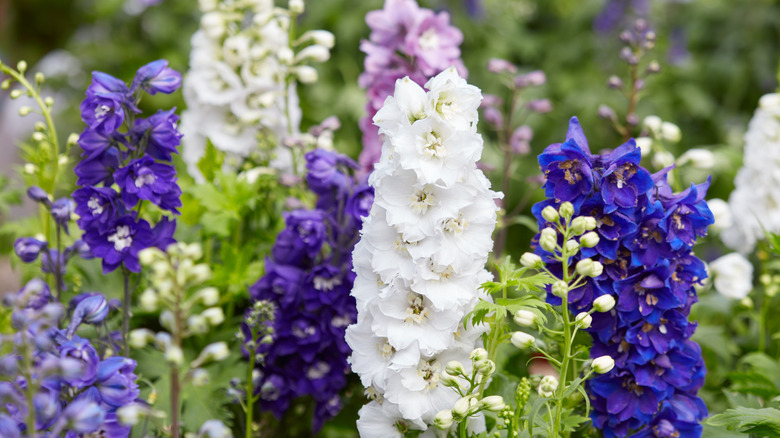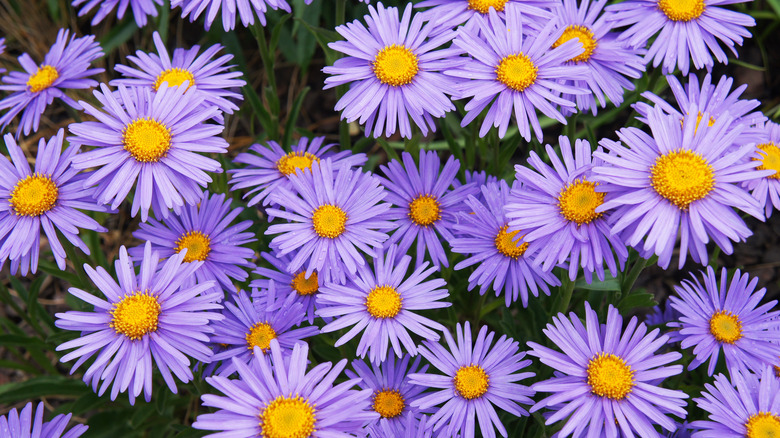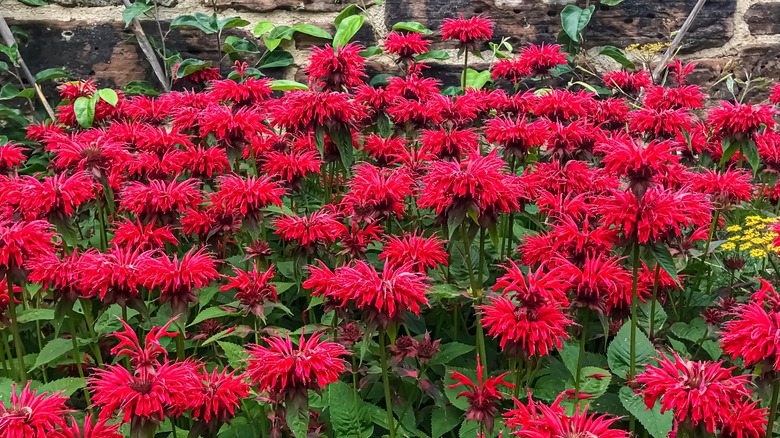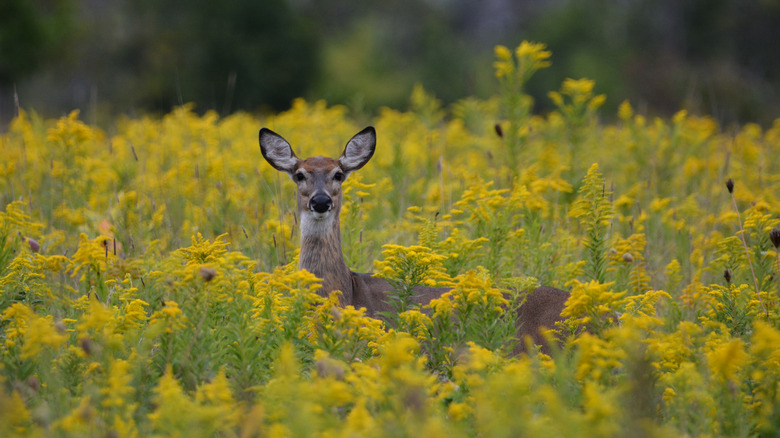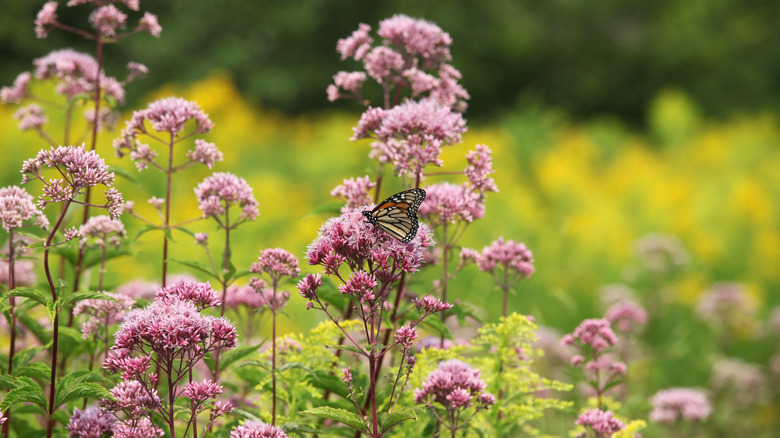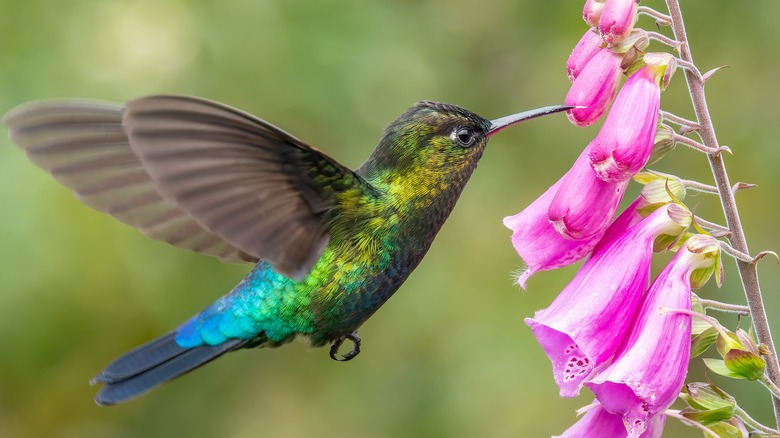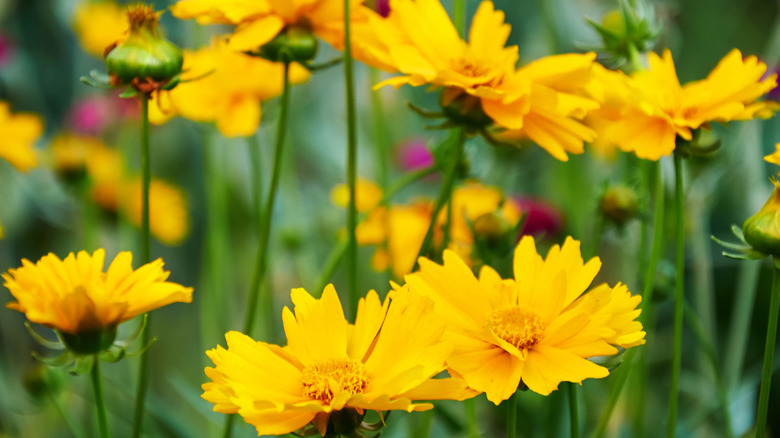20 Gorgeous Flowers You'll Want In Your Yard To Attract Summer Birds
Summer is the season for observing nature in all of its glory, and what better place to do that than your own yard? There are so many beautiful flowers you can plant in your garden that will attract and benefit birds of all kinds. Sunflowers are popular among cardinals and jays, zinnias are beloved by hummingbirds, and black-eyed Susans are a goldfinch favorite. By planting native wildflowers, you will be providing essential nourishment for all kinds of creatures, including butterflies, bees, and even some mammals. Grow milkweed flowers in your garden and you can help endangered Monarch butterflies revive their population. Nectar-rich blooms, such as hibiscus and trumpet honeysuckle, will give hummingbirds a source of fuel as they prepare for their long journey south.
To help you decide which flowers to introduce to your garden, we've rounded up 20 of the best choices that will send summer birds flocking to your backyard. From cheerful cosmos that smell like chocolate to aromatic elderflowers with berries you can turn into jam, you will enjoy having these flowers in your yard just as much as your new feathered friends.
1. Trumpet honeysuckle
These vibrant tubular flowers are a favorite among birds. Not only do they drink the flower nectar in the early summer and eat the berries later in the season, but they also nest in the lush foliage of the flower bushes. Hummingbirds frequent this flower for its nectar, as do butterflies and other pollinators. The berries are an essential source of nourishment among American robins, quails, hermit thrushes, and purple finches. This flower benefits humans too. The dried leaves are often used in herbal medicine to treat respiratory conditions and soothe bee stings.
2. Sunflowers
Birds love sunflower seeds, so it's no wonder that sunflowers are among the most popular for attracting feathered friends. There are several varieties of sunflowers that you can plant to attract birds to your garden. For example, woodpeckers and jays love black oil sunflowers for their nutritious seeds. Striped sunflowers are a food source for cardinals and chickadees. Dwarf sunflowers produce smaller seeds that are ideal for little birds, such as finches and sparrows. If attracting birds is your primary goal, then you should plant sunflowers in your garden, as there is a good chance they will flock to them.
3. Zinnias
Zinnias are beautiful summer flowers that are bound to attract a variety of feathered visitors to your yard. Hummingbirds enjoy this flower's sweet nectar and other birds, such as finches, love to feast on the seeds. There are many types of zinnia flowers you can plant, and each of them produce bird-friendly seeds. However, Soleado zinnia seeds are said to be most nutrient-rich for birds, according to West Coast Seeds. If you want to grow this flowering hummingbird favorite from seed, consider planting California giant, Lilliput, or Zahara zinnias for the best hummingbird sightings.
4. Black-eyed Susan
You've likely seen these cheerful yellow petals before — black-eyed Susan is a flower that is native to North America. It adds a beautiful pop of color to any garden and provides a nutritious feast for birds and pollinators. During the peak blooming season, pollinators will frequent your black-eyed Susan flowers for nectar. Once the blooming season has passed, goldfinches, sparrows, cardinals, and white-breasted nuthatches enjoy the seeds of this plant in the late summer and early fall. Use caution when purchasing the seeds to ensure that they have not been treated with toxic substances.
5. Coneflower
This stunning plant will have birds and butterflies flocking to your yard. Also known as echinacea, coneflowers come in many colorful varieties that attract both birds and pollinators, including red, orange, pink, white, and yellow. Purple coneflowers in particular are beloved by smaller birds, including hummingbirds, as well as majestic Monarch butterflies. As native North American flowers, coneflowers thrive in most regions throughout the continent. Find out which coneflower species is native to your region to best serve the birds and other winged creatures in your local area.
6. Marigold
Characterized by their rich sunset-colored petals, marigolds are an excellent choice for attracting summer birds to your garden. Birds are known to enjoy the seeds and petals of these aromatic flowers. The flowers can also be used to make essential oils and scented products. As a bonus, marigolds help with natural pest control by attracting certain insects that eat aphids and other crop-damaging pests. Plus, they are easy to grow and produce very abundant blooms, providing a rich food source for all kinds of creatures and contributing to a healthy and thriving ecosystem.
7. Cosmos
Add a burst of color to your garden with cosmos. These saucer-shaped blooms resemble daisies and are available in a range of beautiful hues, including purple, pink, yellow, and red. The seeds will entice mourning doves to snack in your yard and they provide a rich source of nourishment for other birds and honey bees. These flowers grow abundantly and are easy to maintain. Plus, they produce a lovely sweet fragrance that you'll enjoy in a bouquet. There is even a chocolate cosmo variety that smells just like chocolate.
8. Elderflower
These tiny white flowers grow on elder trees and shrubs. They produce a wonderfully sweet scent and have many medicinal uses. The blooms thrive in the spring and, by summertime, the plant produces delicious elderberries that attract a whole host of feathered creatures. Red-eyed vireos, brown thrashers, grosbeaks, tanagers, and cardinals cannot get enough of these berries. Insects love this plant as well, which is another welcome source of nourishment for birds. You may want to forage these berries for your own use too, as they can be used for cooking and making jam.
9. Blazing star
Blazing stars are distinctive flowering plants that are part of the aster family. They grow in colorful clusters in the late summer months. The pink and purple blooms provide nectar that attracts hummingbirds and pollinators. Blazing stars produce seeds that are loved by songbirds, such as chickadees, titmice, and finches. It is also loved by insects, which bluebirds will appreciate as an abundant food source. The narrow blossoms will add a unique visual appeal to your garden and they grow to be quite tall. They require full sun exposure and moist, well-draining soil in order to thrive.
10. Cup plants
Give your yard a dose of summer cheer with cup plants. These bright yellow blooms are a wonderful addition to any garden. They are easy to grow and will invite many feathered visitors to your yard, especially songbirds and hummingbirds. Pollinators can't get enough of these flowers; in fact, they can become quite the hub of activity among honey bees, bumblebees, and several butterfly species. Cup plants get their name from the cup-shaped leaves that store rainwater that birds rely on for hydration. Come fall, the flowers become a popular destination among goldfinches looking to snack on the seeds.
11. Daisies
The quintessential flower of early summer, daisies are delicate blooms that are a favorite among songbirds, such as finches, sparrows, and cardinals. Not only do these birds enjoy the seeds, but they also use parts of the daisy plant to build their nests. Daisies repel insects, providing more opportunities for birds and pollinators to enjoy them. If you prefer yellow petals over white ones, consider planting golden groundsel, which have the same look and bird-attracting benefits as daisies. Golden groundsel also acts as a natural repellent of rabbit and deer.
12. Hibiscus
Hibiscus flowers are stunning tropical-looking blooms that will beautify your garden and attract the smallest birds of all: hummingbirds. In fact, these creatures cannot resist hibiscus flowers, so you will likely have an abundance of hummingbird visitors in your yard throughout the summer. Hibiscus flowers come in several colors, but red is the favored shade among hummingbirds. It's worth noting that these flowers have a limited territory in which they can thrive. Perennials are able to make it through the winter in USDA zones 4 to 9, and outdoors in the winter in zones 10 to 12.
13. Petunias
Petunias are a lovely addition to any garden or porch. They are easy to grow and versatile, so you can plant them in the ground, in a basket, or in a window planter box — as long as they receive ample sunshine. Petunias are a hummingbird favorite and they come in a variety of colors that are bound to attract these beautiful creatures to your home, as well as bees and other pollinators. If you plan to grow petunias in a basket, consider hanging a feeder nearby to create the ultimate hummingbird haven.
14. Delphiniums
In addition to hibiscus, zinnias, and honeysuckle, you can also attract hummingbirds to your garden with this colorful perennial plant. Delphiniums have tall stems and vivid colorful blooms that produce delicious nectar for hummingbirds. These birds rely on nourishment from tubular flowers, like delphinium, during their summer migration. As this flower sheds its seeds, it provides a source of nutrition for other birds during the winter as well. These flowers thrive in USDA hardiness zones 3 to 7. Although they are an excellent food source for birds and insects, delphiniums are highly toxic if ingested by humans.
15. Aster
Aster perennials are well-loved by feathered creatures. One of the most common aster plants is the New England aster, which blooms in the late summer and early fall. The seeds provide an abundant food source for a whole host of birds, including blue jays, cardinals, goldfinches, chickadees, titmice, and nuthatches. This flower also attracts insects, which means that you may see insect-eating birds lingering around your aster plants in search of food. As wildflowers that are native to North America, planting asters in your garden is an excellent way to support the local ecosystem.
16. Scarlet beebalm
Like aster, beebalm is a favorite among insects and insect-eating birds. Scarlet beebalm, in particular, attracts hummingbirds and pollinators for its nectar, and insectivorous birds in search of food. If you love butterfly sightings, then scarlet beebalm is a must for your garden. These flowers are a hub of activity during their blooming season from June to August. Scarlet beebalm thrives in USDA plant hardiness zones 4 to 7. It is also deer-resistant and has many medicinal uses, such as to treat indigestion and headaches. Plus, the dry seeds provide sustenance for birds in the winter months.
17. Goldenrod
Native to North America, goldenrod is a perennial flower that gets its name from its rich golden blooms and long thin stems. Many birds are attracted to goldenrod wildflowers for their abundant seeds, including titmice, chickadees, wrens, juncos, and finches. It is a late bloomer that thrives from August to October. When the weather is especially warm, some varieties of goldenrod produce sweet nectar that is enjoyed by butterflies, wasps, and bees. If you plan to grow goldenrod, keep in mind that it spreads quickly. You can separate it every few growing seasons to keep it under control.
18. Milkweed
Milkweed is a native North American plant and there are roughly 115 species of it throughout the continent. Common milkweed is a variety that is especially favored by birds. It is known to benefit and attract wrens, warblers, orioles, quail, pheasants, and vireos. Monarch butterflies also rely on common milkweed to lay their eggs. Milkweed is an essential resource for hundreds of living creatures; beetles, butterflies, ants, bees, flies, and wasps enjoy the sustenance that this wildflower provides. So, if you're considering which plants to add to your garden, milkweed allows you to benefit many animals all at once.
19. Foxgloves
Foxgloves are beautiful flowers with tubular petals in a variety of vivid colors. Foxgloves are yet another hummingbird and bumblebee magnet, thanks to their sweet nectar. Keep in mind that these flowers are biennial, meaning that they only put on their colorful display every other year. Once they do appear, they attract pollinators, butterflies, and beautiful hummingbirds to your garden. It's also worth noting that foxgloves are poisonous if ingested by humans and animals. Be sure to plant your foxgloves in an area that curious pets and children can't reach it.
20. Tickseed
Don't be deterred by their name; tickseed flowers are a beautiful addition to any garden. They attract birds, as well as insects, but not ticks. The name "tickseed" comes from the fact that the seeds of this plant somewhat resemble ticks. As a member of the sunflower family, tickseed is a favorite food source among seed-eating birds. However, the birds have some healthy competition, as tickseed also attracts woodchucks, rabbits, and deer. Pollinators, including bees and butterflies, frequently visit this plant as well. It is sure to bring a hub of activity and wildlife sightings to your backyard.
